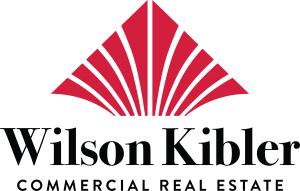Industrial commercial real estate demand on the rise
January 13, 2020Despite global uncertainty surrounding trade policy, slowing growth in payroll employment, a drop-off in business investment, and general volatility in the global market, base fundamentals indicate that the US commercial real estate market remains on a strong footing. National rental growth has increased and vacancy levels have decreased across property types. In November, US commercial property prices rose at the fastest annual rate since early 2018, with the industrial market leading the way at a heightened growth of 13.6% year-over-year (compared to CBD office space which grew at a rate of 6.7% and retail at a rate of 3.4%).
The Columbia industrial market reflected this national trend, reporting significantly lower vacancy rates and higher rents by the end of 2019. The market vacancy rate dropped to a record low of 3.5% during fourth-quarter 2019 from 8.4% during the same period in 2017. Heightened demand caused by dwindling supply has pushed rents up 10.03% – from $3.89/SF to $4.28/SF – in just three years.
Columbia’s industrial market positively absorbed a total of 1.4 million SF in 2019, further highlighting market demand for industrial space. In fact, each quarter of 2019 saw positive absorption and the lowest reported figure still came in at nearly 200,000 SF of positive absorption during the first quarter.
Demand for industrial space, largely driven by the growth in e-commerce sales, is here to stay. Nationally, industrial real estate demand is predicted to grow by 850 million SF, to 14.8 billion SF, by 2023. US Census Bureau data shows from 2012 to 2017, e-commerce deliveries grew 14.4% annually, up from 11% from 2007 to 2012. Consequently, industrial space mirrored this trend, as annual demand growth rose 57.1% between the five-year periods from 2007 to 2012 and 2012 to 2017.
The health of the industrial market is a top priority in South Carolina, where more than 250,000 people work in manufacturing. Wages in South Carolina’s manufacturing sector are 30% higher than other wages statewide, further affecting consumer spending and the state’s overall economy.
The competitive advantage of the SC Ports, business-friendly tax incentives, proximity to three major interstates, and thriving automotive, tire, and aerospace clusters will continue to draw global manufacturers and suppliers to the market. Several major announcements this quarter further highlight growth in these clusters:
- In October, REI Automation, a company that builds and designs custom industrial equipment and integrated machine systems for the automotive, consumer goods, electronics, medical and nuclear markets, announced plans for a $3 million expansion to its Richland County facility.
- Automotive supplier MM Technics, whose primary customer is BMW, is planning a $6 million expansion to its 100,440-square-foot Newberry County facility in the Mid-Carolina Commerce Park.
- The 23,764-square-foot warehouse at 111 N 12th Street in West Columbia was purchased in November by Old School Automotive and Tires for $930,000.
- This quarter, ground was broken on the Midway Logistics V building- a 180,000-square-foot Class A speculative building in the Lexington County Industrial Park. Kardex Remstar, a supplier of automated storage and retrieval solutions, plans to occupy the entire space.
- The largest available industrial space for lease in the Columbia market was leased to Jushi USA. The leading supplier of fiberglass reinforcements and fabrics will occupy the entirety of the 280,468-square-foot manufacturing facility.













